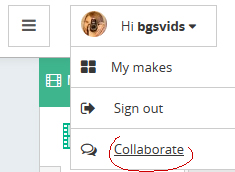Story Assignment:
A complex digital story, educational in nature, using one of a range social media. Your story must:
● Meet the overall quality of work standards listed above
● Be educational
● Be a story–not a digital lesson or lecture
● Be viewable either as an embedded file or a link on the Story page of your e-portfolio
● In addition to the embed/link of the story itself, describe the following on the Story page:
● Why was this the right tool for you to use to tell your story, from a pedagogical perspective?
● How did you purposefully select this for your storytelling tool, in pedagogical terms?
● How would this story work within a course that you teach (or would like to teach) based on pedagogical arguments?
● Be sure to cite relevant literature to support your decisions.
Caught up in the discussion about creative commons, participatory culture and copyright, I used Mozilla’s Popcorn Maker to create my digital story. It is a fully online web-mix utility that allows users to pull in existing online media to create a composite. It is part of an online suite of software provided by Mozilla to teach digital literacy skills and has a built-in creative commons search utility and a utility to automatically credit authors of borrowed works. I used a few of my own drawings in the process which have subsequently become re-mixable creative commons material. Please keep in mind that the playback has some sync issues on various browsers (at one time everything was perfectly synced to the music but browser playback performance unfortunately fragments this).
Situating this in relation to my course:
In week 4 of my online medical/assistive product design studio, my students (post secondary industrial design) are focusing on empathy. They have two activities: 1 ) first to emulate an injury or illness for 24-72 hours to gain empathy and to document the journey; and, 2 ) to create or remix a piece of media that shows empathy for/with an object of design in consideration of its life-cycle for later assessment (LCA). The video mix below serves as an exemplar, or a starting point for students to remix (if they choose this route). Either way, they must personify and tell a story (whether positive or negative) to begin thinking about ‘cradle-to-grave’ life-cycle assessment versus designing for second-life use (cradle to cradle life cycle).
The Digital Story Artifact Provided:
(If you have any troubles viewing this media you will find links at the bottom of this document to check and ensure that your browser plugins are up-to-date.)
Pedagogical Relation:
“Select the media type that most effectively presents the learning material in order to achieve intended learning outcomes” – Siemans, 2003.
In my opinion this choice of media in relation to the topic is apt, as product life-cycle assessment ultimately looks at the materials and timelines involved in the life of a product. The process of designing sustainable products asks students to consider how these timelines might be juggled or remixed for increased sustainability.
“Effective learning is linked more to media characteristics and learning context.” (Siemans, 2003)
A timeline-based media project then echos and speaks the same kind of creational/operational language. It allows students to invest themselves in stages, phases, emotional, social, and logistical factors through the development of a timelined product narrative. The resultant new designs in design practice are often community or co-creational works, and Popcorn Maker provides collaborative tools that parallel these needs. Students in my course are encouraged to work together and contribute to each others works:

![]()


What a well-done story! You do a great job at personifying the shoe and creating empathy and appreciation for footwear in a world of waste. The best part was seeing your original artwork, thank you for the time and effort in creating this mini multi-media effort. Bobbi is a tech rockstar!
Thanks Irene, I’m glad you liked it! I really had fun playing with ideas for how to make this work for my course. I actually had more shoe drawings, but added in the ones that fit the plot best. It turned out shoetastic! Hehehe 🙂